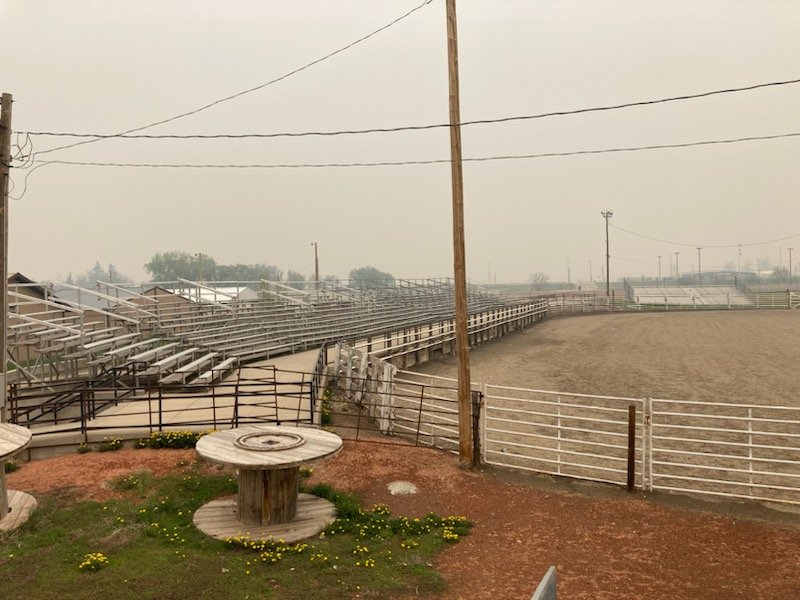EPA awards $500,000 for cleanup and revitalization of abandoned properties in Arnegard, Watford City and Alexander, North Dakota
McKenzie County to use Brownfields funds to address contamination and advance redevelopment opportunities at critical properties
McKenzie County: Sandee Kimpel, Director of Planning, 701-648-0126, [email protected]
Watford City, N.D. (May 25, 2023) – The U.S. Environmental Protection Agency (EPA) today announced McKenzie County, North Dakota, will receive a $500,000 Brownfields Assessment Grant to conduct environmental assessments and develop cleanup plans focused on several properties across the county, including sites in Arnegard, Watford City and Alexander.
“McKenzie County has developed a comprehensive strategy to assess, clean up and revive key properties in the communities of Arnegard, Watford City and Alexander,” said EPA Regional Administrator KC Becker. “We look forward to seeing these projects bring new assets and business opportunities for those who live in these communities.”
“Remediating sites contaminated by hazardous substances and returning them to productive use is a win-win for our communities,” said U.S. Senator Kevin Cramer. “These bipartisan infrastructure law grants will help create new opportunities at currently unusable locations.”
These funds are part of President Biden’s Investing in America Agenda to expedite the assessment and cleanup of brownfield sites while advancing environmental justice through the Multipurpose, Assessment, Revolving Loan Fund, and Cleanup (MARC) Grant programs. Thanks to the historic boost from the Bipartisan Infrastructure Law, this funding is the largest ever awarded by EPA’s Brownfields MARC Grant programs.
“We are excited to use our brownfields grant to help revitalize properties throughout McKenzie County,” said Sandee Kimpel, Director, McKenzie County Planning and Zoning.
Priority sites include several vacant properties such as the McKenzie County Hospital, gas stations, the county fairgrounds, a high school building and a commercial building. Addressing contaminants at these sites will enable the County to redevelop these properties based on established revitalization goals, including enhancing housing options and affordability, addressing the need for childcare, and expanding opportunities for parks, trails and recreation.
The former McKenzie County Fairgrounds, a large, 29.5- acre property in Watford City, is a prime location for future redevelopment. Contaminants of concern include asbestos, lead-based paint, petroleum hydrocarbons, metals and volatile organic compounds. Cleanup and redevelopment of the site will give the community access to a trail system along Cherry Creek, greenspace amenities, promote walkability and spur economic development through retail and restaurants, creating jobs and new housing. There is also an interest in potentially relocating the Fire Department and Emergency Management Services to the site.

Additional properties with known or perceived environmental issues include the Former County Hospital at 516 N Main St. in Watford City. This 17,484 square foot building is the former home of the McKenzie County Healthcare System Hospital, sits in a residential neighborhood and has been vacant since 2018. Potential environmental concerns include asbestos, lead-based paint, polychlorinated biphenyls (PCBs) and petroleum compounds associated with underground storage tanks. Once assessed and cleaned, the building has potential for much-needed reuse as a daycare facility or other productive redevelopment.
The former Arnegard School on Vine Street in Arnegard is a 12,630 square foot, two-story structure that has been vacant since 2013. Contaminants of concern include asbestos and lead. The county’s vision for this historic building includes senior housing units, retail spaces and a new community center that can be rented for events. A community garden will also be added to the landscaping for building residents and visitors.
The Doorman Overhead Building on Elk Street in Alexander is a 5,600 square foot building formerly used as a gas station, liquor store, truck repair shop and overhead door sales and services. Contaminants of concern include lead-based, petroleum hydrocarbons, metals, PCBs and volatile organic compounds. The building’s location makes it ideal for mixed-use, commercial and retail redevelopment, a restaurant and low- to moderate-income apartments on the second floor. The redevelopment will also feature energy-efficient measures including high-efficiency windows, insulation and heating/cooling systems and solar panels for power.
The grant to McKenzie County is among three grants totaling $3.5 million EPA is awarding to grantees in North Dakota today. Other grantees include:
-
The Turtle Mountain Band of Chippewa Indians: $1 million
-
The Fargo Housing and Redevelopment Authority: $2 million
Background
Thanks to the historic $1.5 billion boost from President Biden’s Bipartisan Infrastructure Law, EPA’s Brownfields Program is helping more communities than ever begin to address the economic, social and environmental challenges caused by brownfields and stimulate economic opportunity and environmental revitalization in historically overburdened communities.
EPA’s Brownfields Program also advances President Biden’s Justice40 Initiative to direct 40% of the overall benefits of certain federal investments to disadvantaged communities. Approximately 84% of the MARC program applications selected to receive funding proposed to work in areas that include historically underserved communities.
EPA’s Brownfields Program began in 1995 and has provided nearly $2.37 billion in Brownfield Grants to assess and clean up contaminated properties and return blighted properties to productive reuse. EPA’s investments in addressing brownfield sites have leveraged more than $36 billion in cleanup and redevelopment. Communities that previously received Brownfields Grants used these resources to fund assessments and cleanups of brownfields, and successfully leverage an average of 10.6 jobs per $100,000 of grant funds spent and $19.78 for every dollar.
